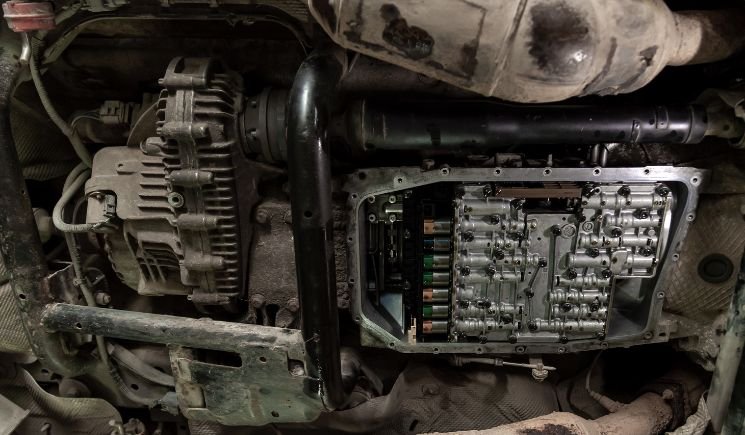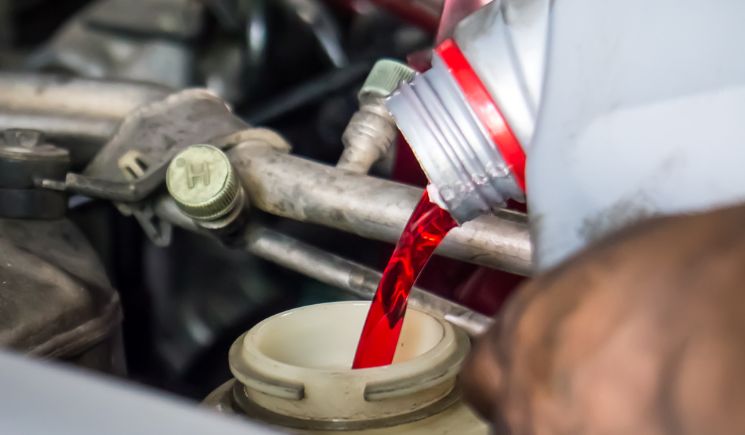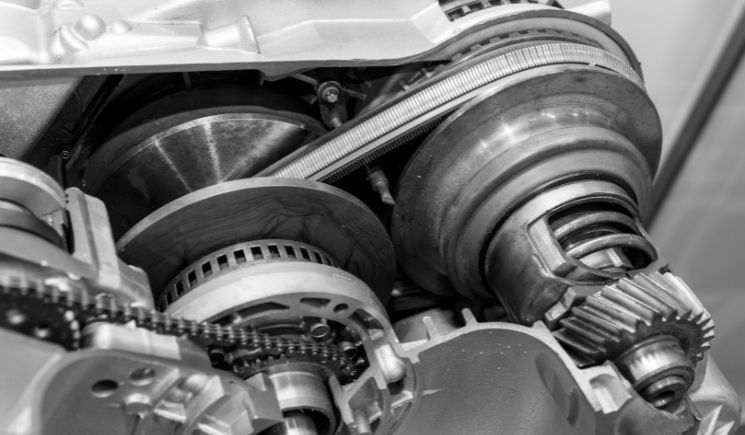Nissan CVT Transmission Pan Bolt Torque: Proper Torque Spec

When servicing the transmission pan on a Nissan CVT, tightening the pan bolts and drain plug to the manufacturer’s factory torque spec is crucial.
Under-torquing the CVT transmission pan hardware can lead to leaks while over-tightening can crack the pan. Most service manuals list the torque as “Tighten to specification,” making the exact values hard to track.
In this article, we’ve researched Nissan models to provide the prescribed torque specs for the CVT pan bolts and drain plug.
Having the proper torque reference helps you avoid mistakes when installing the transmission pan that could lead to more significant problems.
We’ll also cover best practices on torquing procedures, using thread sealant, and determining if pan bolts are reusable or need replacements.
Table of Contents
- Covering Proper Nissan CVT Transmission Pan Bolt Torque And Steps You Should Take
- Here Are Some Researched Torque Specifications For Nissan CVT Transmission Pan Bolts And Drain Plug
Covering Proper Nissan CVT Transmission Pan Bolt Torque And Steps You Should Take
Consult a service manual
- In their service manuals, Nissan provides extremely precise torque specifications and bolt-tightening sequences for each specific model and year.
- For example, the 2015 Nissan Murano service manual specifies torquing the CVT transmission pan bolts to 8-12 N•m (71-106 in-lbs). In a specific crisscross pattern.
- Deviating from the manual’s instructions, even slightly, can lead to leaks, distortion, or other problems. This is because the manual accounts for precise bolt sizes, materials, and sealants.
Careful of overtightening
- CVT transmission pans are of aluminum which is relatively soft and prone to cracking or deformation if the bolts are beyond the specifications.
- Over-torquing can cause the pan to distort and failures to seal in flat against the transmission case by leading to fluid leaks.
- Following the torque specs exactly is crucial for aluminium components like this.
Evenly torque in sequence
- Transmission pan bolts must be under the perfect tightening and in the proper sequence, only some at a time. As a result of it, this evenly distributes the clamping force.
- The typical crisscross sequence will allow you to tighten the bolts gradually in multiple passes to the final spec by zigzagging across the pan.
- This allows the pan to go down evenly against the transmission without any areas that is over the spec prematurely by causing any distortion.
- Skipping around randomly runs a high risk of uneven clamping forces by resulting in leaks or distortions.
Check for torque wrench calibration
- Using an inaccurate torque wrench is one of the most common causes of improper bolt torques that leads to leaking issues.
- Torque wrenches can easily become uncalibrated through normal use and must be certified periodically every year.
- An uncalibrated torque wrench may read 5-10% low or high by resulting in undertightened or overtightened bolts.
- It’s a good practice to check “set” torque wrenches before starting by tightening those against a calibrated torque audit device.
Inspect the thread condition
- Severely corroded, damaged, or cross-threaded bolt holes in the aluminium transmission pan can cause issues when achieving the full clamping force at the specified torque value.
- Debris, dried fluid, or cross-threading can cause excessive friction and prevents the bolts from achieving the proper torque load.
- In these cases, the damaged threads may need to be repaired with heli-coils or bite-type thread repairs. Or the pan may require replacement if the thread damage is too severe.
- New OEM bolts are recommended if threads appears to be even more slightly compromised.
Apply thread sealant
- Nissan specifies applying a light coating of their approved sealant or anti-seize compound to the threads of the transmission pan bolts.
- This helps to ensure consistent clamping force by reducing the thread friction variability.
- Remember that too much or too little sealant can alter the torque readings.
- Make sure to use the OEM-approved sealant as some types can cause chemical reactions with the CVT fluid.
Recheck the torque after an initial drive
- It’s advisable to recheck the transmission pan bolt torques after the vehicle has been driven for a shorter distance and gone through a heat cycle.
- As the transmission cycles through operating temperatures, some minor settlings and shiftings can occur.
- A quick recheck may helps you to compensate for any settling by allowing you to re-torque any bolts that may have dropped from the specs.
Refrain from reusing any copper washers
- The drain plug on Nissan CVTs uses a thin copper washer or gasket that is intended as a single-use crush gasket.
- This washer must be replaced whenever the drain plug is removed to ensure a proper seal.
- Reusing an already crushed washer can potentially leave enough gap to cause a fluid leak.
Here Are Some Researched Torque Specifications For Nissan CVT Transmission Pan Bolts And Drain Plug
Nissan Altima
- 89 in-lbs for pan bolts and 33 ft-lbs for drain plug with new copper washer
Nissan Maxima
- 89 in-lbs to 106 in-lbs range for pan bolts depending on model year and 33 ft-lbs for drain plug
Nissan Sentra
- 89 in-lbs for pan bolts and 29-36 ft-lbs for drain plug per service manual
Nissan Rogue
- 92 in-lbs for the 12 pan bolts and 36 ft-lbs for the drain plug with the new crush washer
Nissan Murano
- 89 in-lbs to 106 in-lbs specified for pan bolts and 36 ft-lbs for drain plug
Nissan Pathfinder
- Trans pan bolts are listed as 89 in-lbs and drain plug torque of 33 ft-lbs
Nissan Frontier/Xterra
- The service manual specifies 106 in-lbs for pan bolts and 36 ft-lbs for drain plugs.
Nissan Titan
- CVT pan bolts torqued to 106 in-lbs, and the drain plug tightened to 33 ft-lbs
Infiniti QX60
- Has 89 in-lbs pan bolt torque and 33 ft-lb spec for drain plug
Frequently Asked Questions About Nissan CVT Transmission Pan Bolt Torque
Can I reuse the old CVT pan bolts, or do I need new ones?
Reusing undamaged bolts with good threads is usually fine, but many opt for fresh bolts during servicing for peace of mind on the road.
Is thread sealant required on CVT transmission pan bolts?
It is not a must, but sealant is recommended to prevent leaks, usually a tiny amount of Nissan-approved FKM liquid gasket or anaerobic sealant.
How urgent is re-torquing the pan bolts after initial driving?
It’s beneficial for precaution but not critical. The initial torque is most important as long as it is done correctly.






